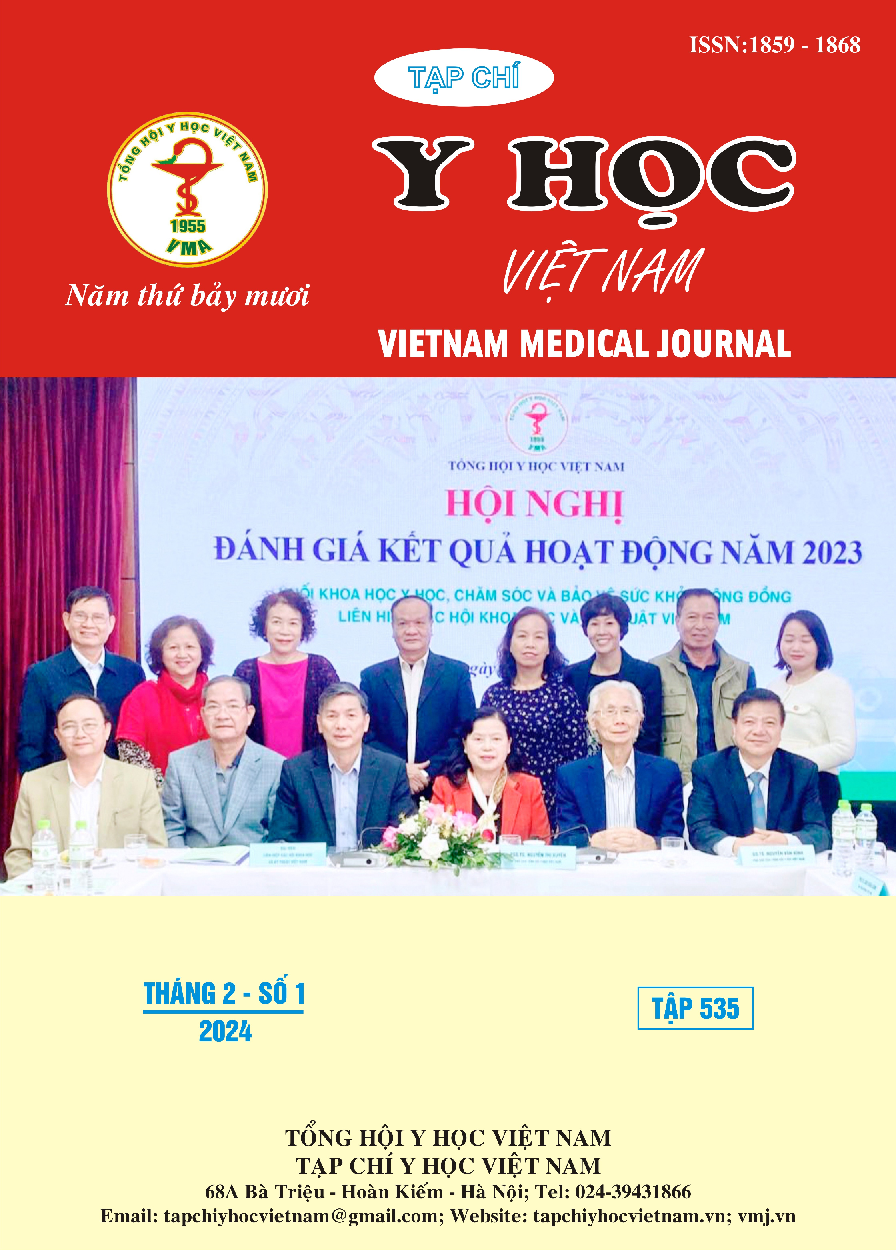CLINICAL CHARACTERISTICS AND TREATMENT RESULT OF ANAPHALYXIS AT TAM ANH HA NOI HOSPITAL
Main Article Content
Abstract
Objectives: Study of clincical characteristics and evaluation of treatment results at Tam Anh Ha Noi hospital. Methods and Methodology: This is retrospective and cross-sectional descriptive study on 119 patients diagnosed with anaphylaxis according to 51/2017/TT-BYT about “Guidelines for prevention diagnosis and treatment anaphylaxis” at Tam Anh Ha Noi hospital from January 2018 to December 2022. Results: The rate of anaphylactic patients tends to increase, mainly due to drugs (53.8%), food (38.7%), and insect venom (2.5%). Among the most common drug causes are non-steroidal anti-inflammatory drugs (26.6%), followed by antibiotics 23.5%; The most common foods are seafood such as shrimp, crab... (40%). Anaphylactic clinical manifestations are diverse in many organs in the body, mainly in the skin and mucous membranes (92.4%), respiratory 67.2%), and digestion (29.4%). The level of anaphylaxis in the study group of patients ranged from level I to level IV, of which level II was the most common with a rate of 69.7%. The degree of anaphylaxis between the causes of anaphylaxis has a statistically significant difference (p=0.001). There were 76 patients using Adrenalin (61.3%). 89% of patients using Adrenalin were administered intramuscularly, 15.1% of patients had to switch to intravenous infusion. In addition, 92.4% of patients received corticosteroids and 90.8% received antihistamines, 1 patient required cardiopulmonary resuscitation. The cure rate is 97.5% of patients, no patients died, and 2.5% of patients were transferred to the hospital. Conclusions: The rate of anaphylactic patients tends to increase due to many causes. Anaphylactic clinical manifestations are diverse in many organs in the body. The cures rate is high.
Article Details
References
2. Ring J., Behrendt H., and de Weck A. (2010). History and classification of anaphylaxis. Chem Immunol Allergy, 95, 1–11.
3. Nguyễn Thị Thuỳ Ninh (2014). Nghiên cứu tình trạng sốc phản vệ ở Bệnh viện Bạch Mai.
4. Nguyễn Thái Hoàng N.V.Đ. (2020). Nghiên cứu tình trạng phản vệ tại Bệnh viện Bạch Mai.
5. Mai Văn Lục (2005). Nghiên cứu đặc điểm lâm sàng và điều trị sốc phản vệ tại bệnh viện Bạch Mai.
6. Thông tư số 51/2017/TT/BYT ngày 29 tháng 12 năm 2017 của Bộ trưởng Bộ y tế về Hướng dẫn phòng, chẩn đoán và xử trí phản vệ.


